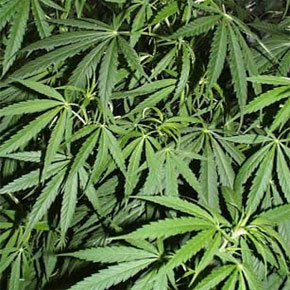
Previous studies have shown Marijuana to be effective not only in reducing allergic skin reactions, but also to ease foor pain in HIV patients and to ward off Alzheimer’s disease.
Lead researcher Mark Wallace from the University of California, San Diego, found in the placebo controlled study of 15 subjects that a low dose of marijuana showed no effect, a medium dose provided moderate pain relief and a high dose increased the pain response.
The results suggest a “therapeutic window” for marijuana, Wallace said.
The study used capsaicin, an alkaloid derived from hot chili peppers that is an irritant to the skin, to mimic the type of neuropathic pain experienced by patients with HIV/AIDS, diabetes or shingles — brief, intense pain following by a longer-lasting secondary pain.
The study, published in the journal Anesthesiology, found a decrease in pain at the medium dose. There was also a significant correlation between plasma levels of THC and decreased pain.
The analgesic effect wasn’t immediate. It took about 45 minutes for the marijuana to have an impact on the pain, Wallace said.
